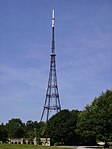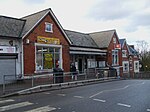Great North Wood

The Great North Wood was a natural oak woodland that started three miles (4.8 km) south-east of central London and scaled the Norwood Ridge. At its full extent, the wood's boundaries stretched almost as far as Croydon and as far north as Camberwell. It had occasional landownings as large clearings, well-established by the Middle Ages such as the hamlets of Penge and Dulwich. Twenty small fragments or re-plantations remain including Dulwich Wood, Sydenham Hill Wood, Biggin Wood and Beaulieu Heights.Many placenames refer to the Great North Wood. Today's suburban placenames that contain the contraction Norwood include South Norwood, Upper Norwood and West Norwood (known as Lower Norwood until 1885). Other settlements that reflect the area's woodland past are Woodside, Forest Hill, and Honor Oak.
Excerpt from the Wikipedia article Great North Wood (License: CC BY-SA 3.0, Authors, Images).Great North Wood
Lymer Avenue, London
Geographical coordinates (GPS) Address Nearby Places Show on map
Geographical coordinates (GPS)
| Latitude | Longitude |
|---|---|
| N 51.426507 ° | E -0.077161 ° |
Address
Lymer Avenue
SE19 1LS London (London Borough of Southwark)
England, United Kingdom
Open on Google Maps











